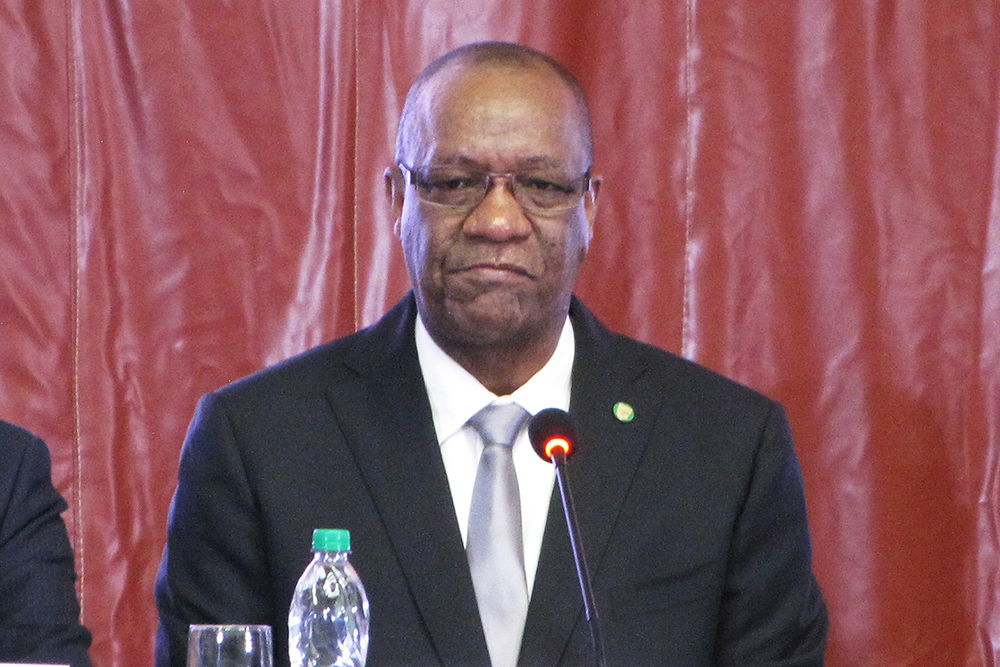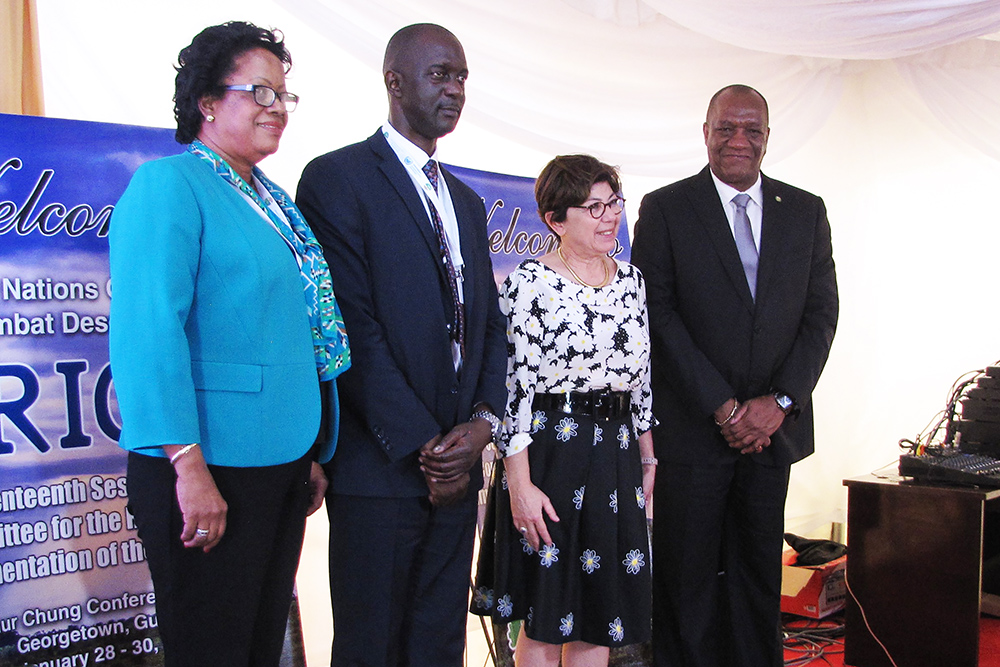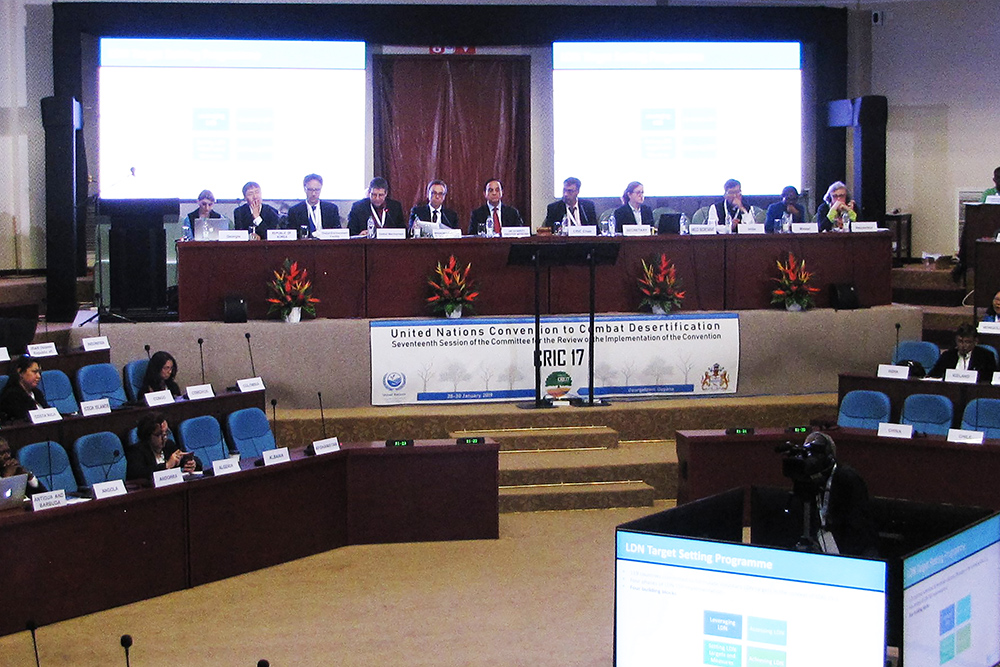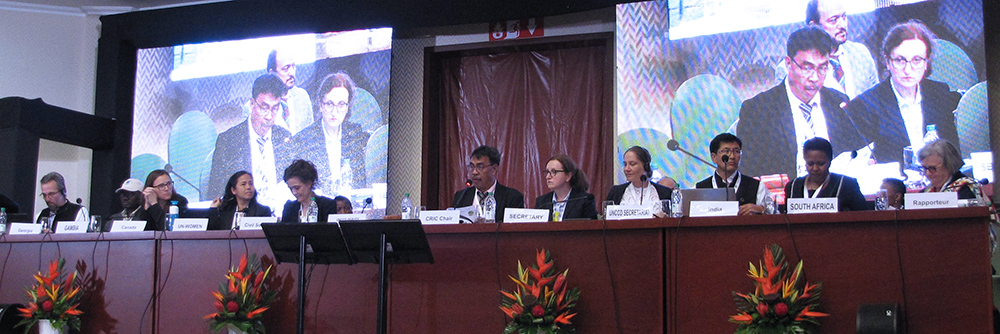Summary
Highlights for Monday, 28 January 2019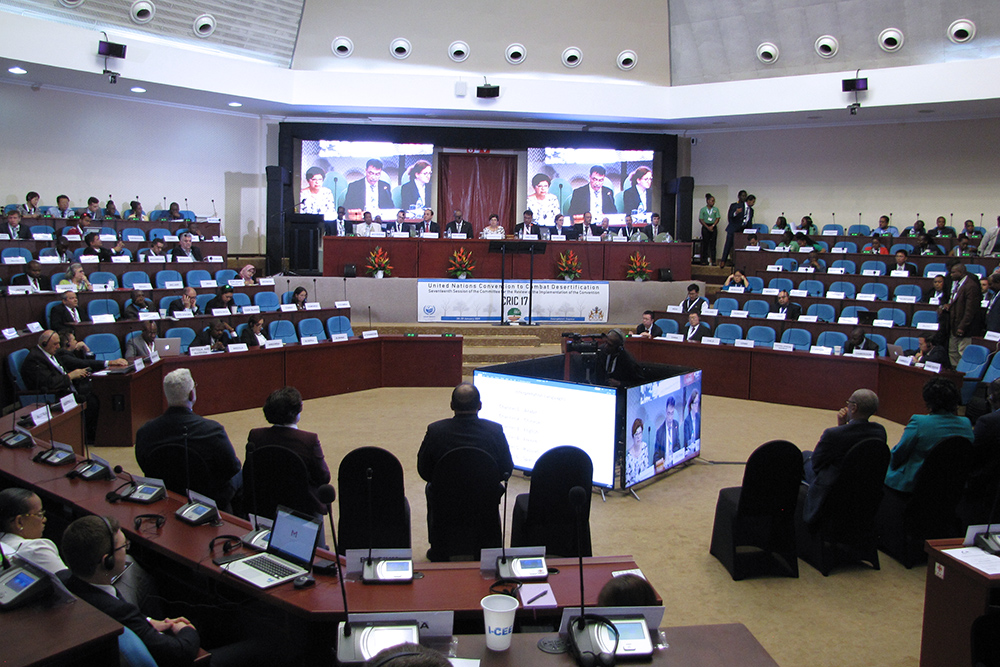
CRIC 17 opened with welcome statements by the CRIC Chair and the host government. UNCCD Executive Secretary, Monique Barbut, highlighted a number of positive trends, such as a decline of overall rural poverty by 27%, and a rise in investments in sustainable land management by the private sector. She noted, however, that response to the growing threat of droughts remains inadequate and critically endangered species are suffering significant losses in part because of changes in land use. Delegates then embarked on reviewing preliminary data analyses gathered under the five Strategic Objectives of the UNCCD Strategic Framework 2018-2030.
In the afternoon, two interactive dialogue sessions took place. In the first, delegates heard presentations on, and considered progress made in, setting land degradation neutrality (LDN) targets and advancing towards LDN implementation. The second dialogue addressed country experiences in implementing the UNCCD Gender Action Plan and its contribution to improve the living conditions of affected populations.
IISD Reporting Services, through its Earth Negotiations Bulletin (ENB) Meeting Coverage, has provided daily web coverage and a summary and analysis report from UNCCD CRIC 17. The summary and analysis report is available in HTML and PDF.

